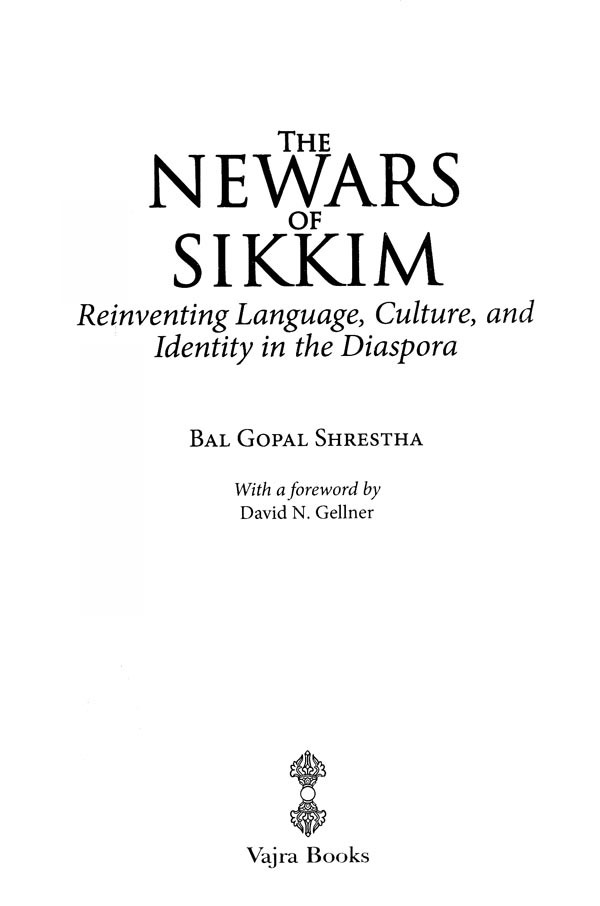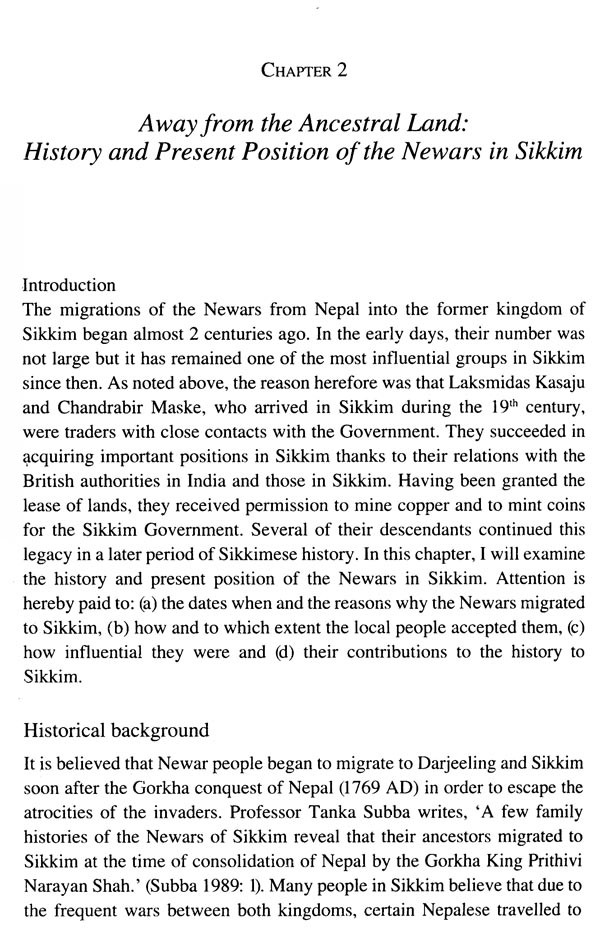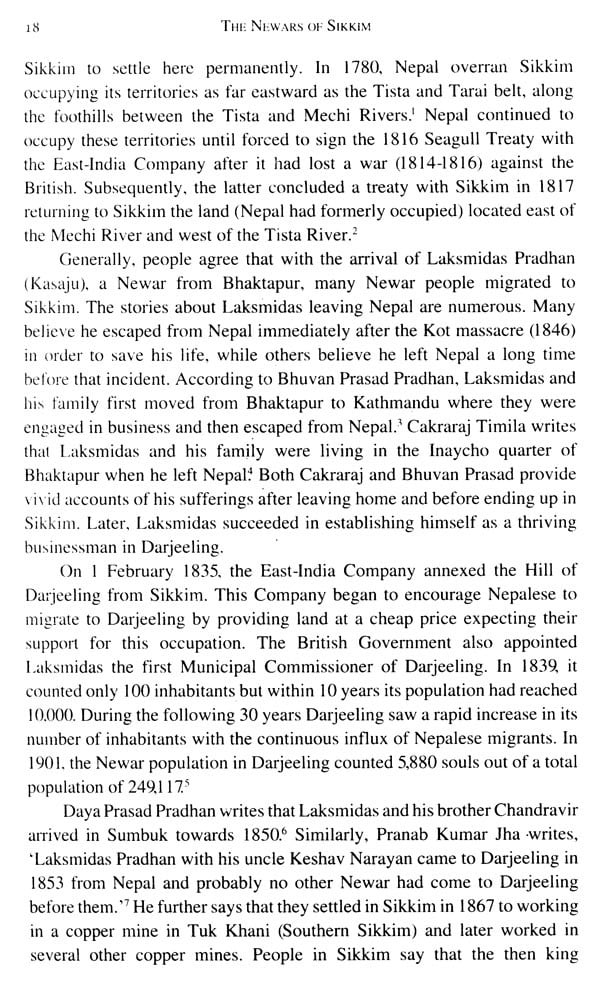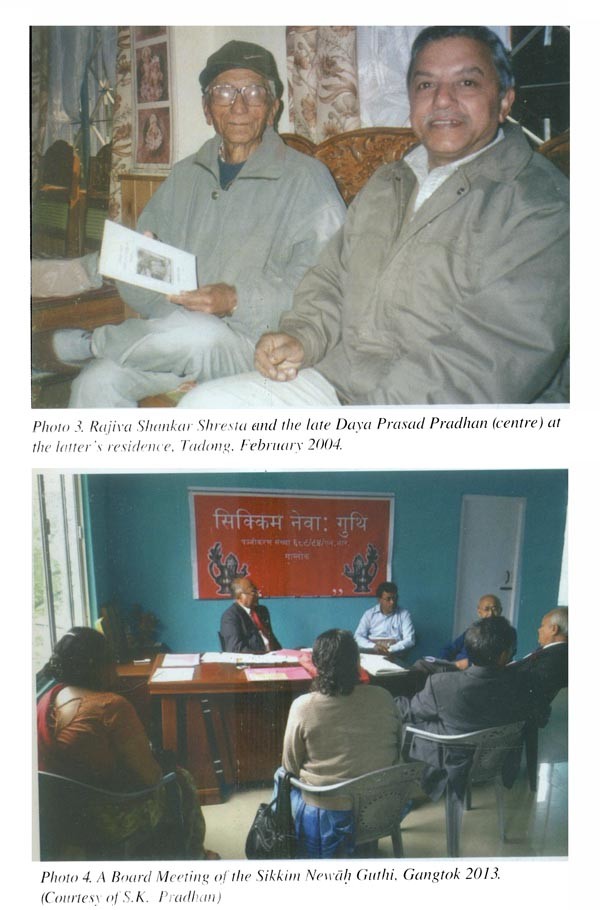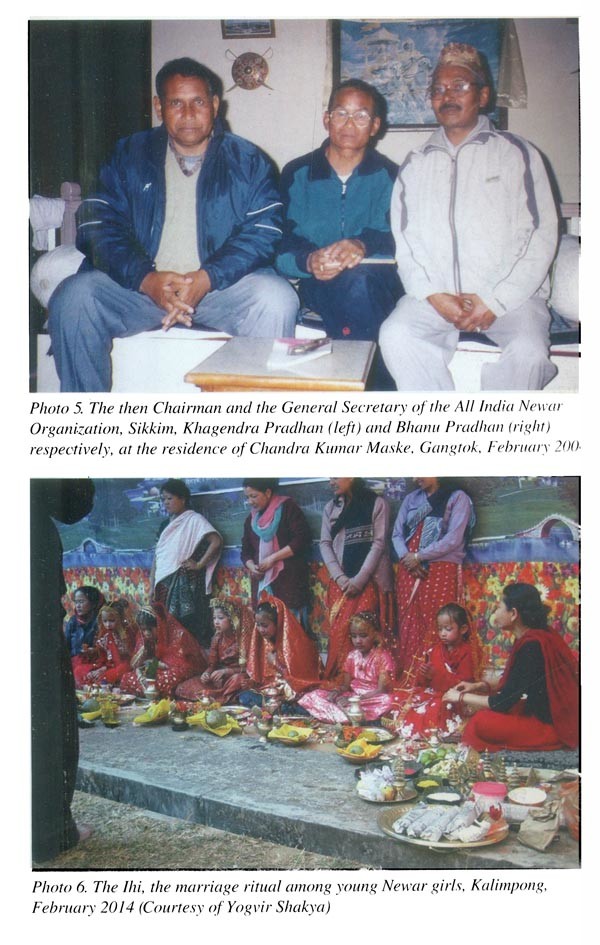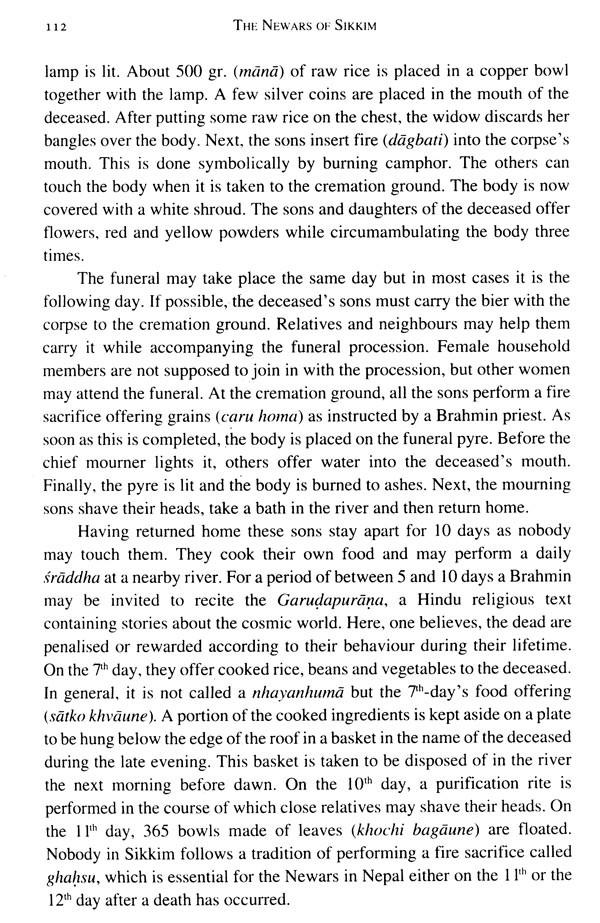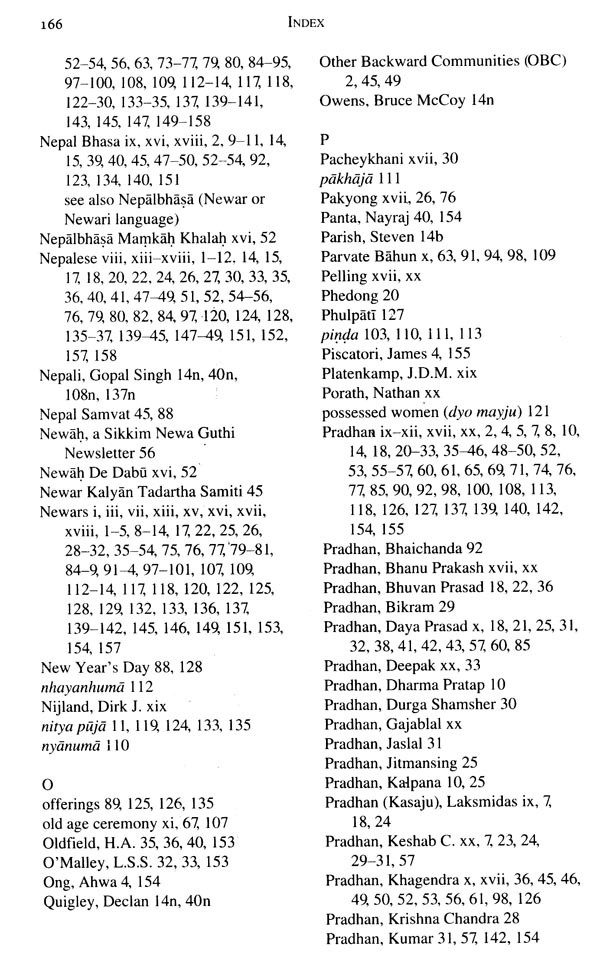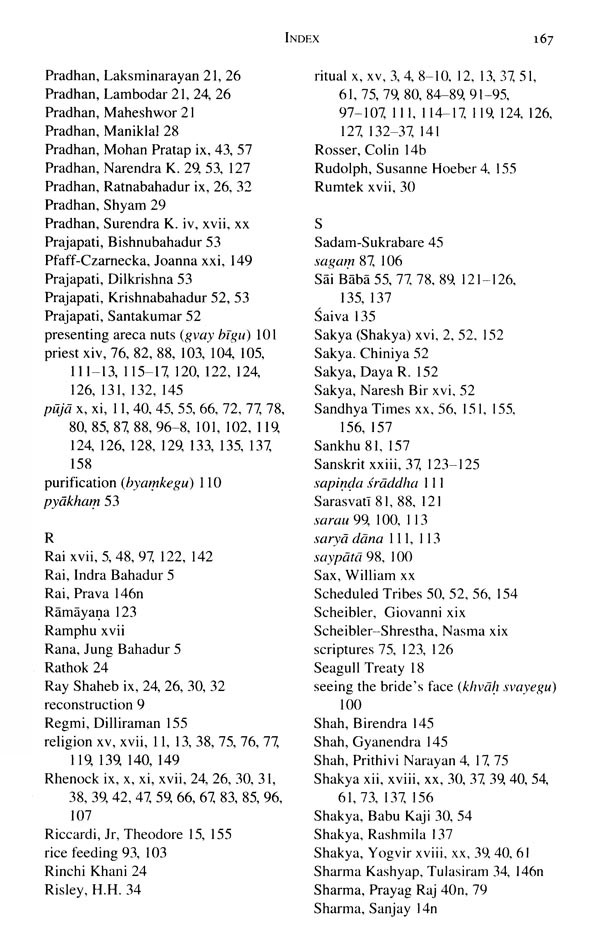
The Newars of Sikkim- Reinventing Language, Culture, and Identity in the Diaspora
Book Specification
| Item Code: | AZG892 |
| Author: | Bal Gopal Shrestha |
| Publisher: | Vajra Books, Nepal |
| Language: | ENGLISH |
| Edition: | 2015 |
| ISBN: | 9789937623339 |
| Pages: | 188 (Throughout Color Illustrations) |
| Cover: | PAPERBACK |
| Other Details | 8.50x5.50 inch |
| Weight | 210 gm |
Book Description
In this book Bal Gopal Shrestha provides a fascinating glimpse into a small diaspora within a diaspora. He establishes convincingly, using Robin Cohen's criteria, that ethnic Nepalese living in Sikkim as Indian citizens do indeed constitute a diaspora population... Newars have a deep tradition of long-distance trade throughout Nepal and up to the Tibetan plateau and they have long had a kind of diasporic consciousness, with folk songs evoking nostalgia for their heartland, the Kathmandu Valley This book, long in the making, provides important documentation of a little known aspect of Nepalese history and society. As such, it is a significant contribution to the ethnography of the Himalayas. At the same time it may teach Nepalese in Nepal and around the world much that they didn't know about how Nepalese in the 'near diaspora have survived and thrived. -Professor David N. Gellner, University of Oxford, UK.
The Newars played a key role in the development of Sikkim in the nineteenth and early twentieth century, as shown in the pages that follow. Two of the most important early figures were the traders and contractors, Laksmidas Kasaju and Chandrabir Maske. Their success and that of their "descendants has led to the perception that all Sikkimese Newars are wealthy businessman, which, as this book also shows, is in fact far from the case.
Dr Shrestha describes how rapid cultural change is taking place within the Newar diaspora in Sikkim. Within the lifetime of the oldest members of the community, large numbers of festivals and customs have been forgotten, only in some cases- to be revived and reinvented in recent years as an aspect of the politics of cultural recognition in contemporary India. These politics take a particular twist in this small and strategic state of the Indian union that borders three other countries (Nepal, the PRC, Bhutan) and is simultaneously close to the tumultuous and equally strategic northeast.
Data the Newars of Nepal were collected during several previous field research related to my research carried out at Leiden 1996 and 2002. began collecting material on the Newars through various contacts Sikkim and Nepal. While preparing for studied the available literature on Sikkim in Leiden (the Netherlands). was fortunate enough able make use facilities of Kern Institute Library, Department of Languages and Cultures Asia. Studying the literature allowed me widen my knowledge on nature, culture, history, religion, and peoples Sikkim.
Migration of the Newars from Nepal to the Himalayan Kingdom of Sikkim began in the middle of the 19 century. The migration of Nepalese to India had started since the early 19 century, first to Lahore in present day Pakistan. Hence the word 'lahure" became synonymous with Nepalese travelling to India in search of employment. After the 1816 treaty between Nepal and the British East-India Company, a gradual increase in the Nepalese migration to India began, especially to the north-eastern region of India (e.g. Darjeeling. Assam, Meghalaya and the former Kingdom of Sikkim) In India, Banaras has remained another destination for many Nepalese since time immemorial.' Modern-day Nepal has witnessed a huge emigration. Number for Nepalese migrants reside in India is estimated between a few hundred thousand to a few million but actual number is unknown: The migration to countries another than India began only after India gained independence from the then East-India Company. The latter took several Gurkha regiments along with it to Malaysia, Singapore, Hong Kong, Brunei, Fiji and most recently to the UK (see Nepal Migration Year Book 2010:43). Besides immigrating to India, the majority of Nepalese migrant workers currently head for the Gulf region (Bhadra 2007) and, in lesser numbers, to Malaysia, Singapore, Hong Kong, the U.S.A., the U.K. as well as to European countries.
**Contents and Sample Pages**
